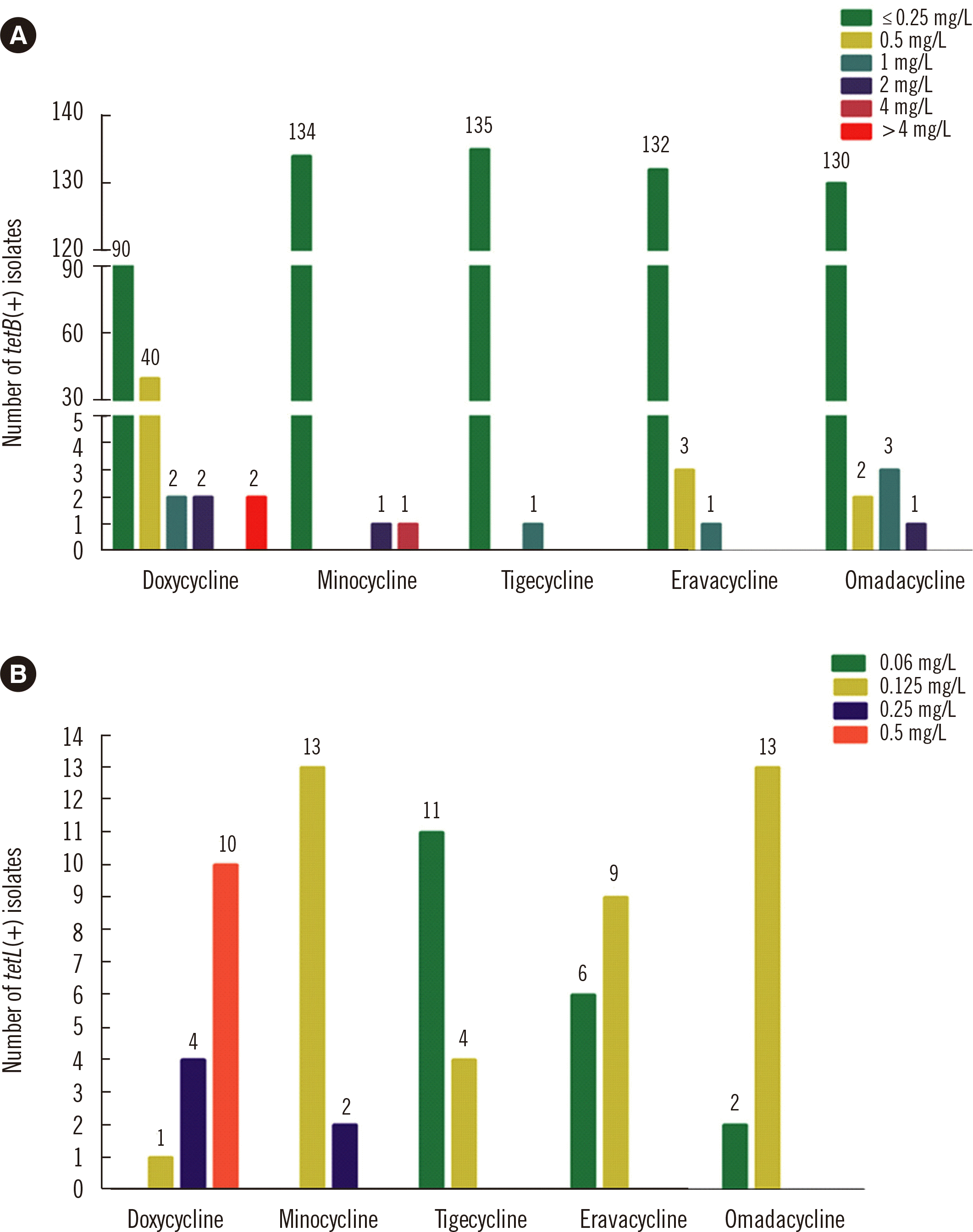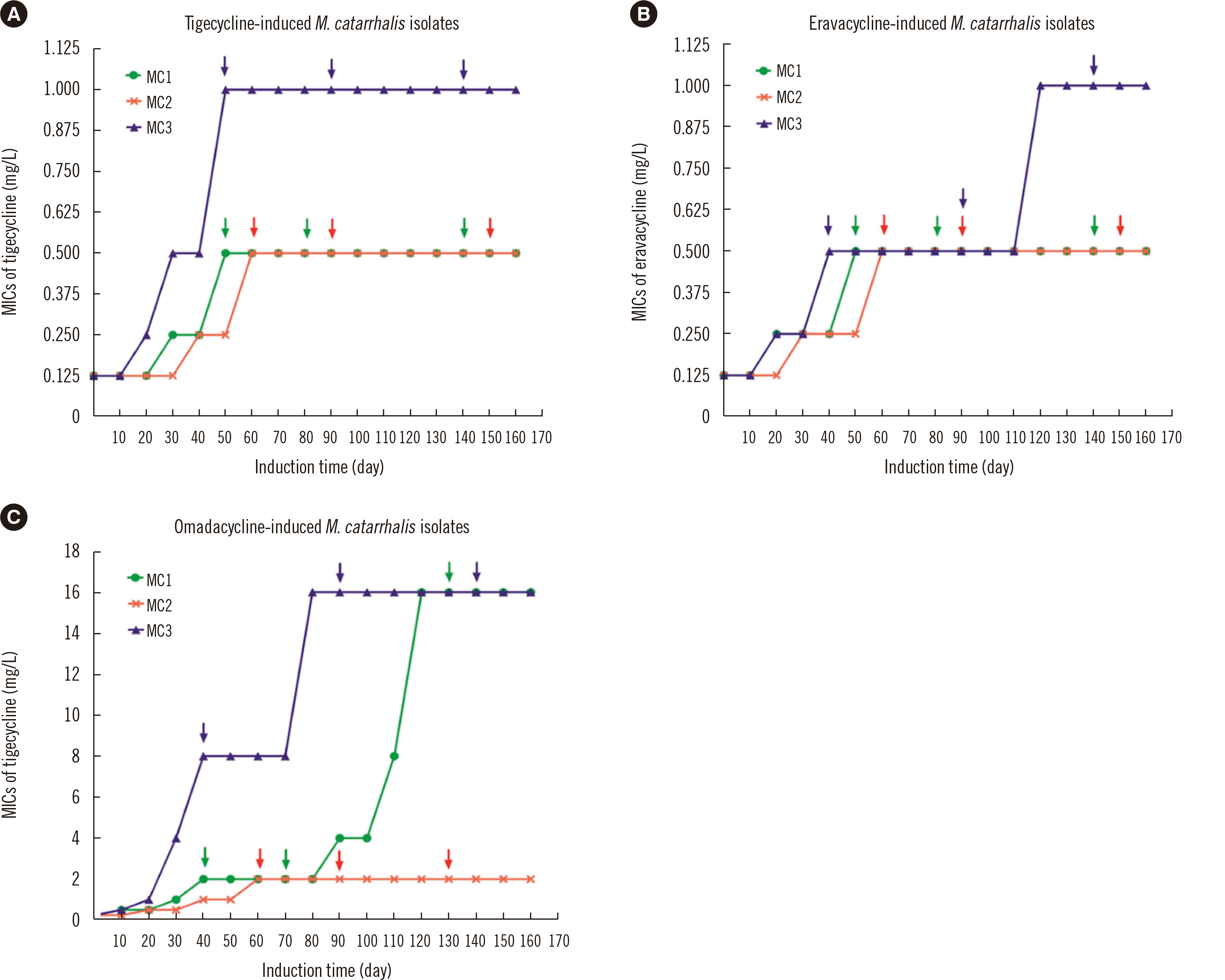1. Gao Y, Lee J, Widmalm G, Im W. 2020; Preferred conformations of lipooligosaccharides and oligosaccharides of
Moraxella catarrhalis. Glycobiology. 30:86–94. DOI:
10.1093/glycob/cwz086. PMID:
31616921.

3. de Vries SP, Bootsma HJ, Hays JP, Hermans PW. 2009; Molecular aspects of
Moraxella catarrhalis pathogenesis. Microbiol Mol Biol Rev. 73:389–406. DOI:
10.1128/MMBR.00007-09. PMID:
19721084. PMCID:
PMC2738133.


4. Augustyniak D, Seredyński R, McClean S, Roszkowiak J, Roszniowski B, Smith DL, et al. 2018; Virulence factors of
Moraxella catarrhalis outer membrane vesicles are major targets for cross-reactive antibodies and have adapted during evolution. Sci Rep. 8:4955. DOI:
10.1038/s41598-018-23029-7. PMID:
29563531. PMCID:
PMC5862889.



5. Spaniol V, Bernhard S, Aebi C. 2015;
Moraxella catarrhalis AcrAB-OprM efflux pump contributes to antimicrobial resistance and is enhanced during cold shock response. Antimicrob Agents Chemother. 59:1886–94. DOI:
10.1128/AAC.03727-14. PMID:
25583725. PMCID:
PMC4356836.


6. Hsu SF, Lin YT, Chen TL, Siu LK, Hsueh PR, Huang ST, et al. 2012; Antimicrobial resistance of
Moraxella catarrhalis isolates in Taiwan. J Microbiol Immunol Infect. 45:134–40. DOI:
10.1016/j.jmii.2011.09.004. PMID:
22154675.

7. Shaikh SB, Ahmed Z, Arsalan SA, Shafiq S. 2015; Prevalence and resistance pattern of
Moraxella catarrhalis in community-acquired lower respiratory tract infections. Infect Drug Resist. 8:263–7. DOI:
10.2147/IDR.S84209. PMID:
26261422. PMCID:
PMC4527568.


8. Sánchez AR, Rogers RS 3rd, Sheridan PJ. 2004; Tetracycline and other tetracycline-derivative staining of the teeth and oral cavity. Int J Dermatol. 43:709–15. DOI:
10.1111/j.1365-4632.2004.02108.x. PMID:
15485524.


9. Zhang Y, Zhang F, Wang H, Zhao C, Wang Z, Cao B, et al. 2016; Antimicrobial susceptibility of
Streptococcus pneumoniae,
Haemophilus influenzae and
Moraxella catarrhalis isolated from community-acquired respiratory tract infections in China: results from the CARTIPS Antimicrobial Surveillance Program. J Glob Antimicrob Resist. 5:36–41. DOI:
10.1016/j.jgar.2016.03.002. PMID:
27436464.
10. Nguyen F, Starosta AL, Arenz S, Sohmen D, Dönhöfer A, Wilson DN. 2014; Tetracycline antibiotics and resistance mechanisms. Biol Chem. 395:559–75. DOI:
10.1515/hsz-2013-0292. PMID:
24497223.

12. Chopra I, Roberts M. 2001; Tetracycline antibiotics: mode of action, applications, molecular biology, and epidemiology of bacterial resistance. Microbiol Mol Biol Rev. 65:232–6. DOI:
10.1128/MMBR.65.2.232-260.2001. PMID:
11381101. PMCID:
PMC99026.



14. Vilacoba E, Almuzara M, Gulone L, Traglia GM, Figueroa SA, Sly G, et al. 2013; Emergence and spread of plasmid-borne
tet(B)::ISCR2 in minocycline-resistant
Acinetobacter baumannii isolates. Antimicrob Agents Chemother. 57:651–4. DOI:
10.1128/AAC.01751-12. PMID:
23147737. PMCID:
PMC3535920.


15. Yoon EJ, Oh Y, Jeong SH. 2020; Development of tigecycline resistance in carbapenemase-producing
Klebsiella pneumoniae sequence type 147 via AcrAB overproduction mediated by replacement of the ramA promoter. Ann Lab Med. 40:15–20. DOI:
10.3343/alm.2020.40.1.15. PMID:
31432634. PMCID:
PMC6713659.

16. Wang L, Liu D, Lv Y, Cui L, Li Y, Li T, et al. 2019; Novel plasmid-mediated tet(X5) gene conferring resistance to tigecycline, eravacycline, and omadacycline in a clinical
Acinetobacter baumannii isolate. Antimicrob Agents Chemother. 64:e01326–19. DOI:
10.1128/AAC.01326-19. PMID:
31611352. PMCID:
PMC7187588.

17. Lin Z, Pu Z, Xu G, Bai B, Chen Z, Sun X, et al. 2020; Omadacycline efficacy against
Enterococcus faecalis isolated in China:
in vitro activity, heteroresistance, and resistance mechanisms. Antimicrob Agents Chemother. 64:e02097–19. DOI:
10.1128/AAC.02097-19. PMID:
31871086. PMCID:
PMC7038293.

18. CLSI. 2010. Methods for antimicrobial dilution and disk susceptibility testing for infrequently isolated of fastidious bacteria: approved guideline. CLSI M45eA2. 2nd ed. Clinical and Laboratory Standards Institute;Wayne, PA:
19. Yao W, Xu G, Bai B, Wang H, Deng M, Zheng J, et al. 2018; In vitro-induced erythromycin resistance facilitates cross-resistance to the novel fluoroketolide, solithromycin, in
Staphylococcus aureus. FEMS Microbiol Lett . 365. DOI:
10.1093/femsle/fny116. PMID:
29733362.
20. Collins JR, Arredondo A, Roa A, Valdez Y, León R, Blanc V. 2016; Periodontal pathogens and tetracycline resistance genes in subgingival biofilm of periodontally healthy and diseased dominican adults. Clin Oral Investig. 20:349–56. DOI:
10.1007/s00784-015-1516-2. PMID:
26121972. PMCID:
PMC4762914.


21. Villedieu A, Diaz-Torres ML, Hunt N, McnabR , Spratt DA, Wilson M, et al. 2003; Prevalence of tetracycline resistance genes in oral bacteria. Antimicrob Agents Chemother. 47:878–82. DOI:
10.1128/AAC.47.3.878-882.2003. PMID:
12604515. PMCID:
PMC149302.



22. Pfaller MA, Huband MD, Rhomberg PR, Flamm RK. 2017; Surveillance of omadacycline activity against clinical isolates from a global collection (North America, Europe, Latin America, Asia-western pacific), 2010-2011. Antimicrob Agents Chemother. 61:e00018–17. DOI:
10.1128/AAC.00018-17. PMID:
28223386. PMCID:
PMC5404553.

23. Gonullu N, Catal F, Kucukbasmaci O, Ozdemir S, Torun MM, Berkiten R. 2009; Comparison of
in vitro activities of tigecycline with other antimicrobial agents against
Streptococcus pneumoniae,
Haemophilus influenzae and
Moraxella catarrhalis in two university hospitals in Istanbul, Turkey. Chemotherapy. 55:161–7. DOI:
10.1159/000214144. PMID:
19390189.

24. Zheng JX, Lin ZW, Sun X, Lin WH, Chen Z, Wu Y, et al. 2018; Overexpression of OqxAB and MacAB efflux pumps contributes to eravacycline resistance and heteroresistance in clinical isolates of
Klebsiella pneumoniae. Emerg Microbes Infect. 7:139. DOI:
10.1038/s41426-018-0141-y. PMID:
30068997. PMCID:
PMC6070572.


25. Fiedler S, Bender JK, Klare I, Halbedel S, Grohmann E, Szewzyk U, et al. 2016; Tigecycline resistance in clinical isolates of
Enterococcus faecium is mediated by an upregulation of plasmid-encoded tetracycline determinants
tet(L) and
tet(M). J Antimicrob Chemother. 71:871–81. DOI:
10.1093/jac/dkv420. PMID:
26682961.

26. Connell SR, Trieber CA, Stelzl U, Einfeldt E, Taylor DE, Nierhaus KH. 2002; The tetracycline resistance protein
Tet(o) perturbs the conformation of the ribosomal decoding centre. Mol Microbiol. 45:1463–72. DOI:
10.1046/j.1365-2958.2002.03115.x. PMID:
12354218.

27. Honeyman L, Ismail M, Nelson ML, Bhatia B, Bowser TE, Chen J, et al. 2015; Structure-activity relationship of the aminomethylcyclines and the discovery of omadacycline. Antimicrob Agents Chemother. 59:7044–53. DOI:
10.1128/AAC.01536-15. PMID:
26349824. PMCID:
PMC4604364.



28. Heidrich CG, Mitova S, Schedlbauer A, Connell SR, Fucini P, Steenbergen JN, et al. 2016; The novel aminomethylcycline omadacycline has high specificity for the primary tetracycline-binding site on the bacterial ribosome. Antibiotics (Basel). 5:32. DOI:
10.3390/antibiotics5040032. PMID:
27669321. PMCID:
PMC5187513.


30. Bauer G, Berens C, Projan SJ, Hillen W. 2004; Comparison of tetracycline and tigecycline binding to ribosomes mapped by dimethylsulphate and drug-directed Fe
2+ cleavage of 16S rRNA. J Antimicrob Chemother. 53:592–9. DOI:
10.1093/jac/dkh125. PMID:
14985271.

31. Lupien A, Gingras H, Leprohon P, Ouellette M. 2015; Induced tigecycline resistance in
Streptococcus pneumoniae mutants reveals mutations in ribosomal proteins and rRNA. J Antimicrob Chemother. 70:2973–80. DOI:
10.1093/jac/dkv211. PMID:
26183184.

32. Bai B, Lin Z, Pu Z, Xu G, Zhang F, Chen Z, et al. 2019;
In vitro activity and heteroresistance of omadacycline against clinical
Staphylococcus aureus isolates from China reveal the impact of omadacycline susceptibility by branched-chain amino acid transport system II carrier protein, Na/Pi cotransporter family protein, and fibronectin-binding protein. Front Microbiol. 10:2546. DOI:
10.3389/fmicb.2019.02546. PMID:
31787948. PMCID:
PMC6856048.









 PDF
PDF Citation
Citation Print
Print



 XML Download
XML Download